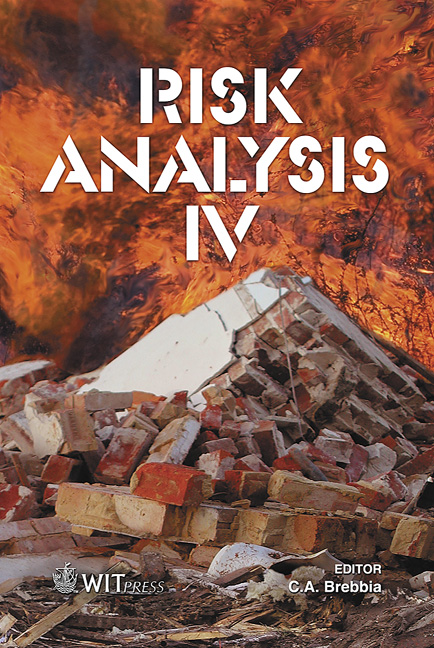Numerical Modeling To Determine Risk Scenarios In An Alpine Alluvial Fan
Price
Free (open access)
Transaction
Volume
77
Pages
10
Published
2004
Size
2,815 kb
Paper DOI
10.2495/RISK040141
Copyright
WIT Press
Author(s)
P. Aleotti1, G. Polloni1, D. Tropeano2 & L. Turconi2
Abstract
In this paper a methodological approach for hazard and risk zonization in an alpine alluvial fan is described. The method is based on the application of the FLO-2D software, a two-dimensional hydraulic model that predicts the areas prone to inundation and estimates the probable range of flow velocity and depth. In the computation, a 200 year return period hydrograph was used and different scenarios were analyzed starting from the actual situation and simulating the occurrence of collateral phenomena such as the partial occlusion of the bridge located at the fan apex or the rupture of the dikes embanked along the riversides in the fan area. The presence of hypothetical defensive levees of different height and length was also simulated. In order to define the event intensity, the adopted approach uses a combination of flow depth and velocity similar to those proposed by other authors for the Swiss and Austrian Alps. Finally, a numerical index is introduced allowing the comparison of the scenarios and, therefore, the determination of the most suitable protective measures. 1 Introduction Along alpine valley floors, fans, built up by lateral tributaries, are favored sites for settlements and human activities because they are not as steep as the valley flanks and not as marshy as the frequently flooded valley floors. Fans however, are very hazardous areas because they are often affected by severe flooding and mass transport phenomena that cause serious damage and injuries in the urban centers located therein. The studied area (Isorno alluvial fan) is located in the Italian Western Alps at the exit of a lateral tributary (Isorno torrent) in the valley bottom of the Toce River (Ossola Valley), fig. 1.
Keywords





